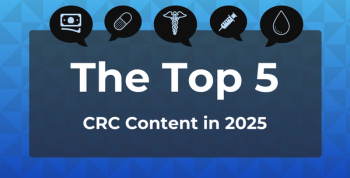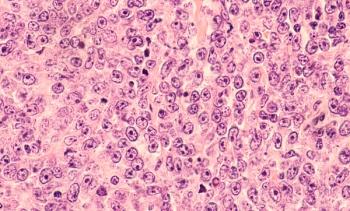
Primary Care Doctors Lead Rising Physician Exodus From Medicare
Key Takeaways
- Physician departures from Medicare have increased, with primary care physicians experiencing the highest exit rates, especially during the COVID-19 pandemic.
- Contributing factors include administrative burdens, outdated payment systems, and insufficient residency slots, particularly affecting primary care and psychiatry.
According to the American Medical Association, blame for the ongoing physician shortage may lie with overly burdensome administrative processes, an antiquated Medicare payment system, and lack of education for residents in primary care and psychiatry.
Data from a 14-year period of physicians billing
“The findings may reflect multiple factors, including the greater burden of new communication methods (eg, portal messages) and demands for clinical documentation,” the authors wrote, adding that this trend concerns many in medicine and the “adequacy of the US physician workforce remains a perennial policy topic.”
Their study population comprised 791,025 physicians (mean [SD] age, 44.6 [12.0] years) who billed Medicare between 2010 and 2014, identified via National Provider Identifiers and 100% of fee-for-service claims. Physicians were excluded if their total annual Medicare billing came in below 100 claims, and they were considered as having departed from practicing medicine if they did not file any Medicare claims for 12 consecutive months.
This study is not the first to place blame for physician exit—perhaps early retirement, too—on burdensome administrative workflows. Recent research from the American Medical Association blames not only the same but also an antiquated Medicare payment system and lack of Medicare-funded graduate medical education residency slots in primary care and psychiatry—both facing critical shortages.2 With Medicare providing coverage to approximately 67 million adult patients, reductions in payments for Medicare Part B services and the fact that Medicare payments overall are lower vs those received from private insurers have also been implicated in physician exits.3
Starting in 2010, age-adjusted physician exits from Medicare increased through 2014, plateaued over the next 2 years, and rose steadily through 2021. Further, despite a slight drop in 2023, the totality of exits remained above 2019 findings. Overall, physician exits ranged from 1.80% (95% CI, 1.75%-1.85%) to 3.60% (95% CI, 3.56%-3.65%) for the study period. The most noticeable spike in departures correlates with the primary years of the COVID-19 pandemic, when physician exits rose from more than 3.0% in 2019 to more than 4% for 2021.
A subanalysis looked at exits by specialty, considering the impact of physician departures on primary, hospital-based specialty, surgical specialty, and medical specialty care. Beginning in 2010 and continuing through 2015, hospital-based specialty care had the highest departure rate, and it was followed by primary care, medical specialty care, and surgical specialty. 2017 saw a change, when primary care exits overtook hospital-based specialty care exits and surgical exits exceeded medical specialty care exits.
By 2023, the last year of recorded exits, the exit rate was 4.41% (95% CI, 4.33%-4.50%) among primary care physicians (PCPs), exceeding that of hospital-based specialists at 3.50% (95% CI, 3.42%-3.58%), surgical specialists at 2.99% (95% CI, 2.88%-3.10%), and medical specialists at 2.49% (95% CI, 2.40%-2.59%). Trending similarly, data on age-adjusted totals also place PCPs highest for total exits for the study period, at an increase of 0.21 (95% CI, 0.20-0.21) percentage points and far exceeding the rates seen for exit growth among surgical specialists (0.14, 95% CI, 0.14-0.15), hospital-based specialists (0.08; 95% CI, 0.07-0.09), and medical specialists (0.06; 95% CI, 0.05-0.06). Additional data by practice size show the greatest annual growth in exits was seen for physicians leaving their solo practice (0.18; 95% CI, 0.17-0.18 percentage points), followed by medium (0.15; 95% CI, 0.14-0.16) and large group practices (0.08; 95% CI, 0.08-0.09). In this study, medium group practices had 10 to 24 physicians and large group practices had 25 or more physicians.
Beyond the administrative and communication burdens previously mentioned, the study authors also implicate a consolidated physician market, with the growth in small practice exits connected to the increase in new physicians increasingly working for large practices.
“Decreased fees may also play a role but cannot explain the 2014 to 2016 stabilization in exit rates,” they concluded. “Variation in exit rates by specialty suggests that concern about inadequate PCP supply may be warranted but requires investigation.”
Limitations on generalizing these findings on a larger scale are that the authors solely relied on Medicare fee-for-service claims, so they could not differentiate between an exit and a retirement, and they did not include physician entry so they were working with an incomplete picture of the true physician supply.
References
- Neprash HT, Chernew M. Trends in physician exit from fee-for-service Medicare. JAMA Health Forum. 2025;6(7):e252267. doi:10.1001/jamahealthforum.2025.2267
- Mukkamala B. The physician shortage will worsen—unless Congress acts now. AMA. June 16, 2025. Accessed July 22, 2025.
https://www.ama-assn.org/about/leadership/physician-shortage-will-worsen-unless-congress-acts-now - Cottrill A, Ochieng N, Newman T. How many physicians have opted out of the Medicare program? KFF. January 17, 2025. Accessed July 22, 2025.
https://www.kff.org/medicare/issue-brief/how-many-physicians-have-opted-out-of-the-medicare-program/
Newsletter
Stay ahead of policy, cost, and value—subscribe to AJMC for expert insights at the intersection of clinical care and health economics.








